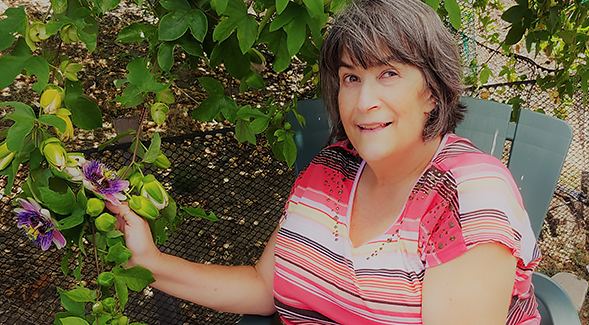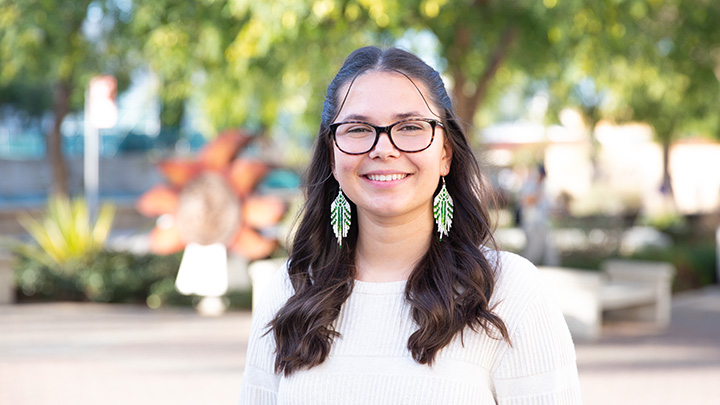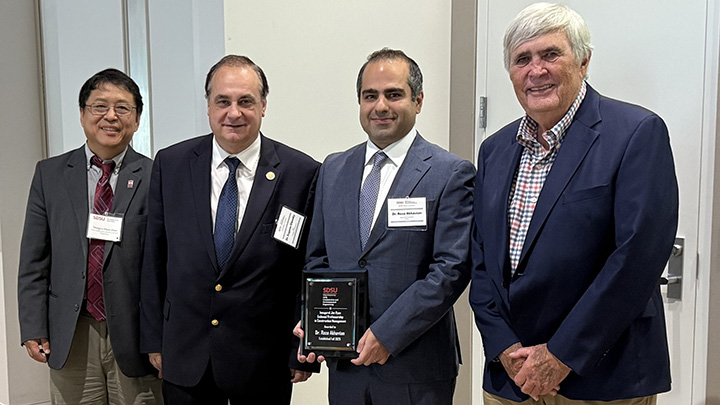From Behind a Screen, Lecturer Takes Future Educators to the Outdoors
A class that usually enjoys a natural setting is adapting to the temporary stay-at-home era.

For the future educators enrolled in Children and Nature, “That's where the service learning happens,” Sanders said. “We've actually planted, dug up and changed the ground covering. We've done a lot of work there.”
Children and Nature provides a testing ground for prospective teachers to learn how to address the growing disconnect of children from the natural environment — a long-term trend with detrimental effects on mental, physical and emotional well-being. By getting their hands dirty in the Children Center’s Memory Park, students discover alternatives to teaching within the constraints of four walls.
So what happens when a course firmly rooted in getting kids off devices and into the outdoors is itself moved into the virtual space by a pandemic?
Rather than feeling confined by Zoom meetings, Sanders has seized on the moment as an opportunity to push geographic boundaries and provide novel virtual experiences.
“I am getting excited about the potential for the students to be exposed to things that really break the mold for them,” Sanders said. “A lot of times when they first come to me I hear, ‘There are regulations,’ or ‘It can't be done.’ But it is being done. And now we're going to get to see how.”
Sanders has been in conversations with a local forest school — a concept based on a Scandinavian education model — that offers preschool and kindergarten 100% outdoors. Because of the lower risk of COVID-19 transmission in open air environments, the school is planning to open for the fall, and Sanders is hopeful to arrange an online tour or even have her students virtually “sit in” on a classroom experience.
She also has her sights set on virtually transporting her students to the Edible Schoolyard, an organic garden at Martin Luther King, Jr. Middle School in Berkeley that transforms children’s relationship with food. Sanders has already received curriculum materials from Edible Schoolyard and arranged for its leaders to participate in a panel discussion with her students.
Make no mistake, the virtual space won’t confine Sanders forever. It’s clear how much she yearns to be back in the outdoors with her students at the Children’s Center, located on the east side of campus. But might those virtual learning opportunities she sought out by necessity persist once the pandemic passes?
“One hundred percent, yes,” Sanders said. “This has been a way for me to really reflect and to look beyond the limited experience of only the SDSU Children's Center, or only San Diego, and really expose my students to this movement.”



